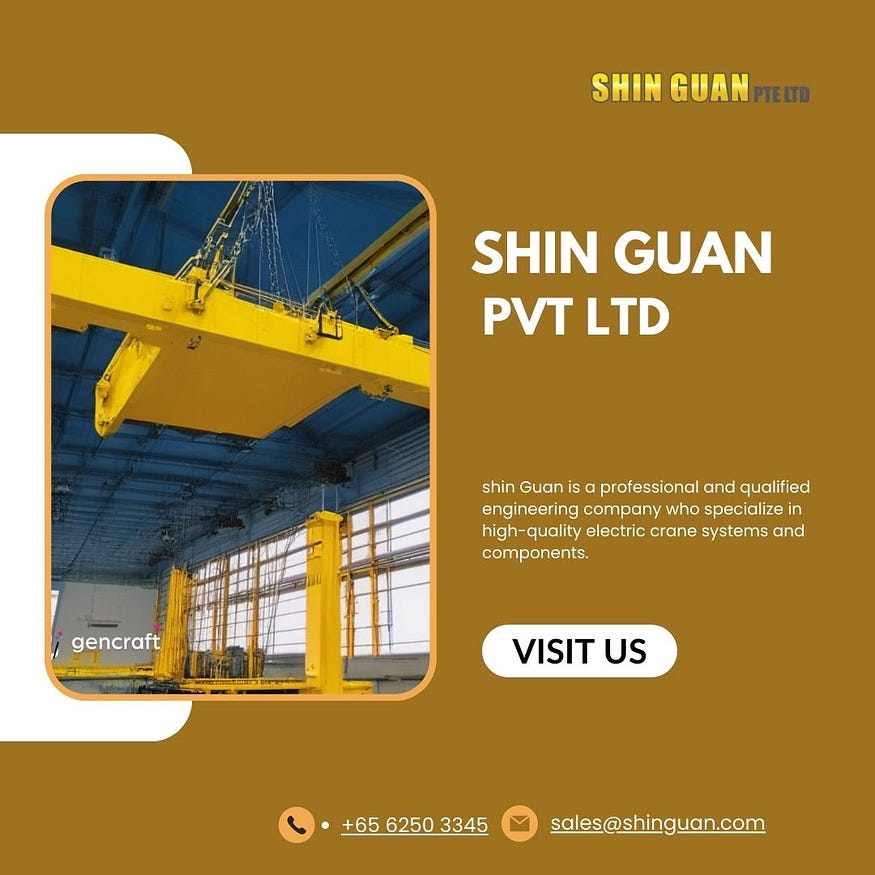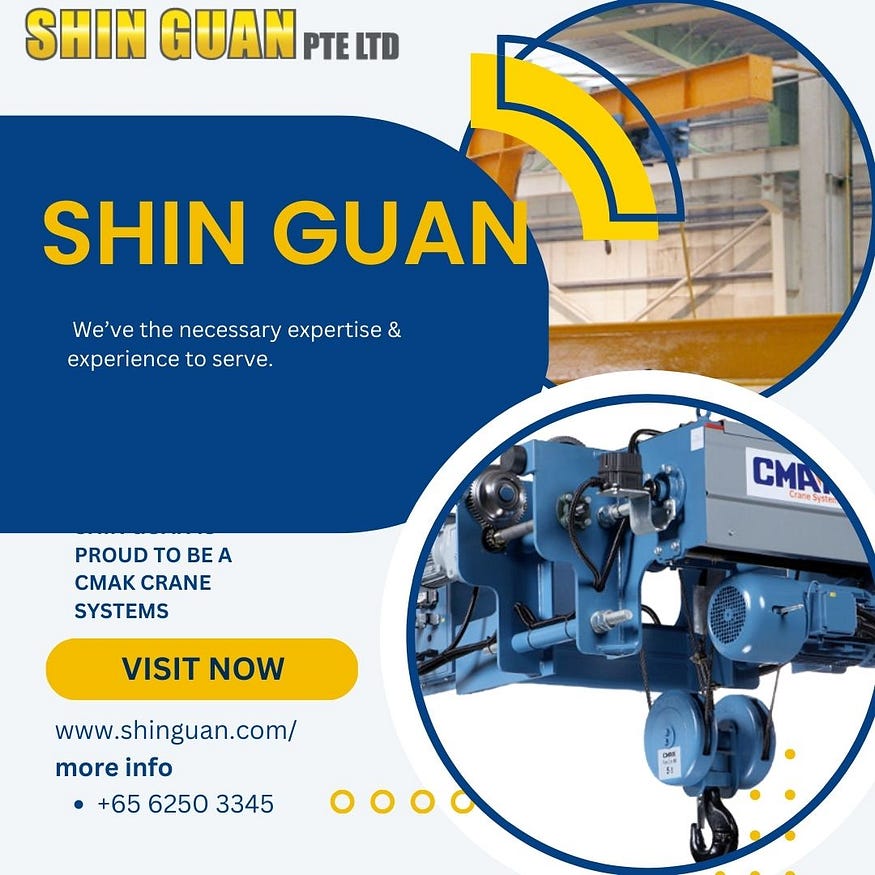Wire rope hoist
Introduction
A wire rope hoist is a type of hoist that uses wire rope as its lifting medium. It is commonly used in construction sites, factories, and warehouses to lift and move heavy objects. Wire rope hoists are known for their strength, durability, and reliability, which make them a popular choice for heavy-duty lifting applications.
This blog post will discuss the different types of wire rope hoists, their advantages and disadvantages, and their applications.
Types of Wire Rope Hoists
Wire rope hoists can be divided into two main types:
Electric Wire Rope Hoists
Electric wire rope hoists are powered by electricity and controlled by a pendant or remote control. They are known for their high lifting capacity, speed, and precision. Electric wire rope hoists are commonly used in factories and warehouses where heavy lifting is required.
Manual Wire Rope Hoists
Manual wire rope hoists are powered by human effort and are controlled by a hand chain or a lever. They are known for their simplicity, durability, and affordability. Manual wire rope hoists are commonly used in construction sites and workshops where heavy lifting is required but power sources are limited.
Advantages and Disadvantages of Wire Rope Hoists
Wire rope hoists have many advantages over other types of hoists, but they also have some disadvantages. Let's take a look at them:
Advantages
High lifting capacity: Wire rope hoists can lift heavy loads of up to several tons.
Durability: Wire rope hoists are made of high-quality materials that can withstand harsh environments and frequent use.
Reliability: Wire rope hoists are known for their reliability and can be used for many years without requiring major repairs.
Speed: Electric wire rope hoists can lift and lower loads at high speeds, which can increase productivity in factories and warehouses.
Precision: Electric wire rope hoists can be controlled with great precision, which makes them ideal for lifting delicate or fragile objects.
Disadvantages
Cost: Wire rope hoists can be more expensive than other types of hoists, especially electric wire rope hoists.
Space requirements: Wire rope hoists require a lot of space to operate, which can be a challenge in cramped or crowded workspaces.
Maintenance: Wire rope hoists require regular maintenance to ensure their safe and efficient operation.
Applications of Wire Rope Hoists
Wire rope hoists are used in a wide variety of applications, including:
Construction sites: Wire rope hoists are used to lift and move heavy materials such as steel beams, concrete blocks, and construction equipment.
Factories and warehouses: Wire rope hoists are used to lift and move heavy machinery, products, and materials.
Mines and quarries: Wire rope hoists are used to lift and move heavy loads of minerals and ores.
Shipping ports: Wire rope hoists are used to load and unload cargo from ships.
Entertainment industry: Wire rope hoists are used to lift and move equipment and scenery on stage.
Conclusion
Wire rope hoists are an essential tool in many industries where heavy lifting is required. They are known for their strength, durability, and reliability, which make them a popular choice for heavy-duty lifting applications. Whether you need to lift and move heavy materials on a construction site, in a factory or warehouse, or on a ship, a wire rope hoist can help you get the job done safely and efficiently.
Jib crane Singapore
Jib cranes are a popular option for material handling in Singapore, and several companies offer them for sale and rental. Konecranes Singapore offers wall-mounted and pillar jib cranes with a load capacity of up to 2,000 kg and a slewing motion that can reach 270-300 degrees depending on the jib type.[1] Rotomatik makes slewing jib cranes that are efficient for spot-loading activities, with applications such as assembling and repairing pumps, valves, and motors.[2] Interlift produces wall-mounted and pillar-jib cranes, with their pillar-mounted jib cranes being perfectly suitable for small and narrow operating rooms.[3] MPH Cranes, a leading overhead crane lifting equipment supplier in Singapore, also supplies jib cranes for all lifting applications.
Overhead crane
Overhead cranes are a common type of crane used in many industries for material handling and lifting heavy loads. They are named "overhead" because they are suspended from the ceiling or a supporting structure, allowing them to move freely across the workspace. In Singapore, there are several companies that offer overhead cranes for sale and rental, including MPH Cranes, Konecranes Singapore, and Crane-Tech.
MPH Cranes offers a wide range of overhead cranes, including single-girder, double-girder, and underslung cranes. They also offer customized solutions for specific requirements and applications, such as ship-to-shore cranes for ports and offshore cranes for the oil and gas industry.
Konecranes Singapore specializes in heavy-duty overhead cranes for industries such as steel, paper, and mining. Their cranes can handle loads up to 500 tons and are equipped with advanced features such as automatic positioning and collision avoidance systems.
Crane-Tech offers a variety of overhead cranes, including single-girder, double-girder, and gantry cranes. They also provide maintenance, repair, and modernization services for existing overhead cranes, helping companies to prolong the lifespan and improve the performance of their equipment.
Overhead cranes are used in a variety of industries and applications, including manufacturing, construction, warehousing, and logistics. They are ideal for lifting and moving heavy loads over long distances and can be customized to suit specific requirements, such as low headroom or hazardous environments.
In conclusion, overhead cranes are an essential tool for many industries in Singapore, and several companies offer a range of options for sale and rental. When choosing an overhead crane, it is important to consider factors such as load capacity, workspace requirements, and advanced features to ensure that the crane is suitable for the specific application.
Gantry crane
Gantry cranes are a type of crane that is supported by two or more legs that run on rails or wheels. They are commonly used in ports, shipyards, construction sites, and warehouses to lift and move heavy loads. In Singapore, there are several companies that offer gantry cranes for sale and rental, including Konecranes Singapore, MPH Cranes, and TAWI Singapore.
Konecranes Singapore offers a range of gantry cranes, including rubber-tired gantry cranes (RTGs), rail-mounted gantry cranes (RMGs), and ship-to-shore (STS) cranes. Their cranes can handle loads up to 65 tons and are equipped with advanced features such as automation and remote monitoring.
MPH Cranes specializes in heavy-duty gantry cranes for industries such as construction, shipbuilding, and oil and gas. They offer customized solutions for specific requirements, such as heavy-duty gantry cranes with a load capacity of up to 500 tons.
TAWI Singapore offers lightweight and portable gantry cranes for smaller applications, such as warehouses and workshops. Their aluminium gantry cranes are easy to assemble and disassemble and can be used for lifting loads up to 2 tons.
Gantry cranes have several advantages over other types of cranes. They can be used in outdoor and indoor environments, and their mobility allows them to move freely across the workspace. They can be customized to suit specific requirements, such as low headroom or hazardous environments. They are also ideal for lifting and moving heavy loads over long distances.
In conclusion, gantry cranes are an essential tool for many industries in Singapore, and several companies offer a range of options for sale and rental. When choosing a gantry crane, it is important to consider factors such as load capacity, workspace requirements, and advanced features to ensure that the crane is suitable for the specific application.
Overhead travelling crane
Overhead travelling cranes, also known as bridge cranes, are a type of crane that runs on elevated tracks or runway beams along the length of a building or outdoor space. They are commonly used in industries such as manufacturing, construction, and logistics for lifting and moving heavy loads. In Singapore, there are several companies that offer overhead travelling cranes for sale and rental, including Konecranes Singapore, MPH Cranes, and Crane-Tech.
Konecranes Singapore offers a range of overhead travelling cranes, including single-girder and double-girder cranes with a load capacity of up to 500 tons. Their cranes are equipped with advanced features such as automation, remote monitoring, and collision avoidance systems.
MPH Cranes specializes in heavy-duty overhead travelling cranes for industries such as shipbuilding, offshore, and steel. They offer customized solutions for specific requirements, such as cranes with a load capacity of up to 500 tons and a span of up to 50 meters.
Crane-Tech provides overhead travelling cranes for a variety of applications, including single-girder, double-girder, and underslung cranes. They also offer maintenance, repair, and modernization services for existing overhead travelling cranes, helping companies to prolong the lifespan and improve the performance of their equipment.
Overhead travelling cranes have several advantages over other types of cranes. They can cover a large area, which makes them ideal for lifting and moving heavy loads over long distances. They can also be used in indoor and outdoor environments, and their mobility allows them to move freely across the workspace. They are also customizable to suit specific requirements, such as low headroom or hazardous environments.
In conclusion, overhead travelling cranes are an essential tool for many industries in Singapore, and several companies offer a range of options for sale and rental. When choosing an overhead travelling crane, it is important to consider factors such as load capacity, workspace requirements, and advanced features to ensure that the crane is suitable for the specific application.









